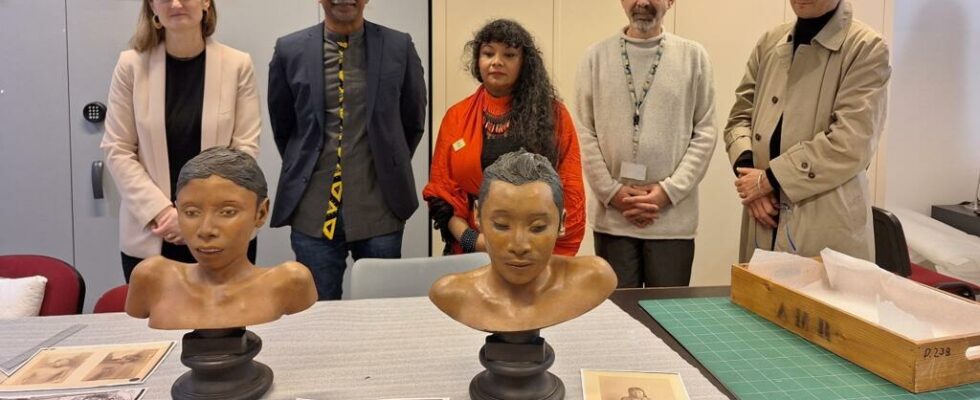New progress in the research work carried out for several years by the Moliko Alet-Po association, made up of descendants of Amerindians from Guyana and Suriname who were exhibited 132 years ago at the Jardin d’acclimatation in Paris. The association made it possible to identify a group of 33 people who arrived in the middle of winter 1892 as part of the human exhibitions in progress at the time. The poor living conditions and the cold took their toll on their health. Several of them died before returning to Guyana. Their descendants are demanding the repatriation of the remains of their ancestors. While awaiting the implementation of an exceptional law which allows this return, the association continues its work of searching for information to identify the last indigenous people in the group.
Malé, 17 years old, and Kuani, 27 years old, are the two Arawaks from the group of Amerindians formerly exhibited at the Jardin d’acclimation de Paris who were missing from the identification, of the eight members of the group who died before their return to Guyana. Faced with their two busts molded and exhibited in the basement of the Musée de l’Homme, Corinne Toka-Devilliers, president of the Moliko Alet-Po association, is overcome by emotion:
“ They are there, they are almost asleep, they are serene. The emotion is great, really. After 132 years, seeing them… And then, seeing them all together through photography – since a photo is also a soul –, it’s a beautiful stage in our history. »
A great step which marks a progression towards restitution of Native American remains for a return to Guyana: “ This was the next step. We knew of their existence in these casts. And for me, after the human remains, I needed the two casts, because they are part of the group. And it was also important for the association to see them. It is a reality, and today we can say that, for the return, officially, we are requesting the six human remains and our two busts of Kuani and Malé. »
Also readGuyana: complaint from indigenous peoples filed with the UN
An upcoming return for the exhibited Native Americans
Kuani and Malé, two brothers, died a few days after their arrival at human zoo. The plaster cast of their bust was made after their death, explains Martin Friess, scientific director at the Musée de l’Homme:
“ The principle of casting, whether on the living or the dead, consists of making a negative, a plaster. And then, we make a positive from this mold that we paint, and then, we model certain parts like the eyes. The eyes were colored too. »
For Jean-Victor Castor, MP from Guyana present at the consultation of the busts, this moment is important in the restitution process initiated by the association: “ We must take into account the progress of the work that has been done by the Moliko association which is making this restitution request. We cannot expect the legislative vehicle to be very long either. »
The government received last week the report it was waiting for on this issue. The descendants of the exhibited Native Americans hope that a legal solution will quickly be found to allow the return of their ancestors to their native land.
Also readThe lost childhood of Amerindians from Guyana sent to Catholic boarding schools
